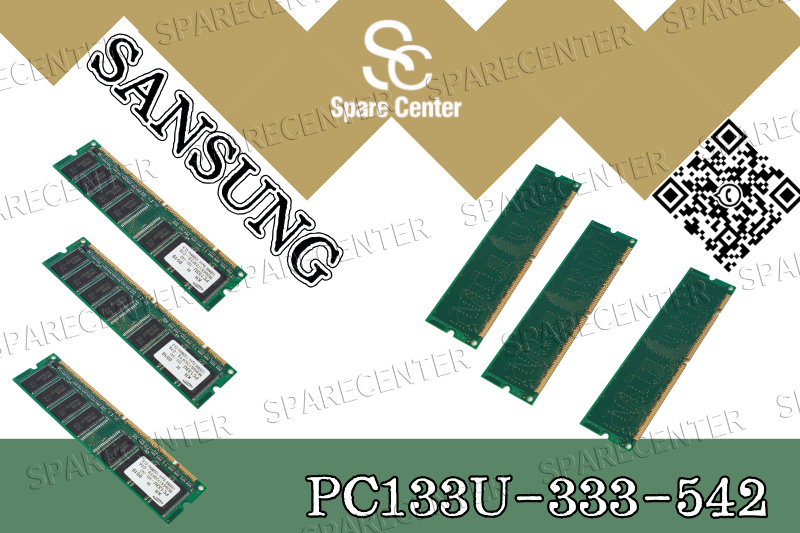| Introduction The relentless pace of technological advancement often means components become obsolete almost as soon as they hit the market. Yet, some pieces of hardware, through their sheer prevalence and impact, etch themselves into the annals of computing history. One such unsung hero is the SAMSUNG PC133U-333-542 memory board. While it may seem like a relic in today's DDR5 and NVMe era, this humble module played a pivotal role in shaping the computing landscape of the late 1990s and early 2000s, powering countless personal computers and enabling the digital revolution for a generation. Its pervasive impact made it a cornerstone of early modern PCs. A Deep Dive into PC133 SDRAM and Its Memory Technology To truly appreciate the SAMSUNG PC133U-333-542, it's essential to understand the memory technology it embodied: PC133 SDRAM (Synchronous Dynamic Random-Access Memory). Building upon earlier SDRAM standards, PC133 SDRAM represented a significant leap forward in memory performance for its time. The "133" in its designation refers to its operational speed—133 MHz, synchronizing with the system's front-side bus (FSB) to optimize data transfer. This particular memory technology was crucial for the era. The "333" and "542" in the SAMSUNG PC133U-333-542 designation often refer to specific timing parameters and internal Samsung part numbers, respectively. These timings, often expressed as a series like "CL3-3-3", were crucial for determining the real-world performance of the memory module. A lower number generally indicated faster performance for this PC133 SDRAM. The PC133 SDRAM standard's ability to keep pace with faster processors like the Intel Pentium III and early AMD Athlon chips was critical. Without robust and efficient memory technology like the PC133U-333-542, the rapid advancements in CPU power would have been severely bottlenecked, hindering the progress of personal computing and impacting computing history. |
During this era, Samsung was a dominant force in the memory manufacturing industry, and the SAMSUNG PC133U-333-542 memory board became a ubiquitous component in PCs worldwide. Its reliability, cost-effectiveness, and widespread availability made it a go-to choice for original equipment manufacturers (OEMs) and individual builders alike. You'd find this very PC133 SDRAM board populating the DIMM slots of Compaq, Dell, HP, Gateway, and countless custom-built systems, solidifying its pervasive impact.
The pervasive impact of such a widely adopted component can't be overstated. It democratized access to faster, more capable computers, enabling a broader range of users to engage with emerging technologies like early broadband internet, rudimentary multimedia applications, and the burgeoning world of 3D gaming. For many, a system upgraded with a SAMSUNG PC133U-333-542 module meant the difference between a sluggish, frustrating experience and a responsive, enjoyable one. It powered the digital lives of students, small businesses, and families, becoming an unseen workhorse that facilitated everything from word processing to early web Browse, making a significant mark on computing history.
Furthermore, the longevity of systems equipped with PC133 SDRAM, including modules like the PC133U-333-542, meant that these machines often served for many years, acting as primary computers or later as secondary machines for specific tasks. This further cemented its historical significance, as it contributed to the installed base of computers that helped define the early internet age, showcasing its enduring pervasive impact on computing history and memory technology
Conclusion
Pervasive Impact Pervasive Impact Pervasive Impact Pervasive Impact Pervasive Impact Computing History Computing History Computing History Computing History Memory Technology Memory Technology Memory Technology Memory Technology Memory Technology PC133 SDRAM PC133 SDRAM PC133 SDRAM PC133 SDRAM PC133 SDRAM PC133 SDRAM PC133 SDRAM PC133 SDRAM
If you want to more details,please contact me without hesitate.Email:sales@sparecenter.com



